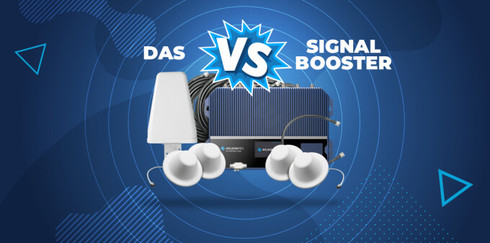What’s the Difference Between Active, Passive, & Hybrid DAS?
Passive DAS vs. Active DAS vs. Hybrid DAS
Many commercial buildings are plagued with poor cellular reception, affecting communication and productivity. There are various factors that hurt in-building cell reception. The main ones are building materials and cell tower distance. That’s where Distributed Antenna Systems (DAS) come into play. They help overcome cellular signal challenges and significantly improve cellular coverage where it's needed.
Since there are many types of DAS, we made this guide to differentiate the three indoor DAS solutions. For any DAS questions you may have, contact us at 1-800-420-3211 to talk to one of our DAS experts.
Take advantage of our system design and installation services. Learn more or call us for a free consultation: 1-800-969-8189.
What is a Distributed Antenna System?
A DAS, short for Distributed Antenna System, is a network of spatially separated cellular antennas used to blanket buildings with reliable cellular signals. The distributed cell signal is generated from a signal source. Depending on the type of DAS setup, the signal source can be over the air, an on-site base transceiver station (BTS), or a small cell. Overall performance will vary depending on the equipment used.
What are the Different Types of DAS?
- Passive DAS: Takes your outside cell signal, boosts it, and rebroadcasts it indoors, improving coverage. Cell signal is relayed through coaxial cable. This type of DAS is also known as a cell phone signal booster.
- Active DAS: Does not need existing signal to work. It generates a cellular signal through a direct connection to the signal source, which allows for stronger signal transmission and greater capacity.
- Hybrid DAS: Combines Passive and Active DAS. It offers the scalability of Active DAS at a comparable price to Passive DAS.
If interested, below is a more in-depth description of each with recommendations.
Passive DAS (a.k.a Cell Phone Signal Booster)
A Passive DAS takes your outside cell signal and delivers it even stronger throughout your building using passive components (coaxial cables, splitters, taps/couplers, etc.).
It uses a donor antenna, usually installed on the roof, to draw in off-air cellular signals from nearby towers. Depending on the system, it could be from one or multiple carriers. Via coaxial cable, the signal is relayed into the building, bypassing those signal-blocking materials. An amplifier takes those signals and boosts them if weak to ensure strong, reliable connectivity indoors. This is a key feature for buildings operating on the edge of the network. The amplified signal is spread across all indoor antennas and broadcasted into the desired areas.
Out of all the DAS options, Passive DAS is the most affordable and the simplest to deploy.
It's performance heavily depends on:
- Outside Signal Strength: If the starting signal strength is on the weaker end, the cell booster will yield reduced coverage. On the other hand, greater coverage is expected when the starting cell signal is on the stronger end.
- Cell Tower Capacity: Since the signal source is off-air signals from cell towers, performance is at the mercy of the cell tower. During times of congestion, users may notice a slight change in cellular reception.
There is a wide variety of Passive DAS solutions for commercial applications available, each varying in how much coverage they can provide. Some are rated to cover up to 8,000 sq ft, while others can cover up to 100,000 sq ft. For wider coverage, multiple systems can be integrated to get the coverage you need.
To maximize results, careful planning is essential, especially since signal loss occurs with passive components. Thu, we provide professional commercial installations.
| Pros: | Cons: |
|
|
Here are our top Passive DAS solutions:
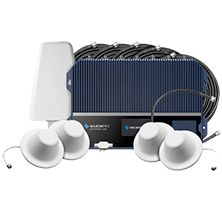
WilsonPro Enterprise 4300
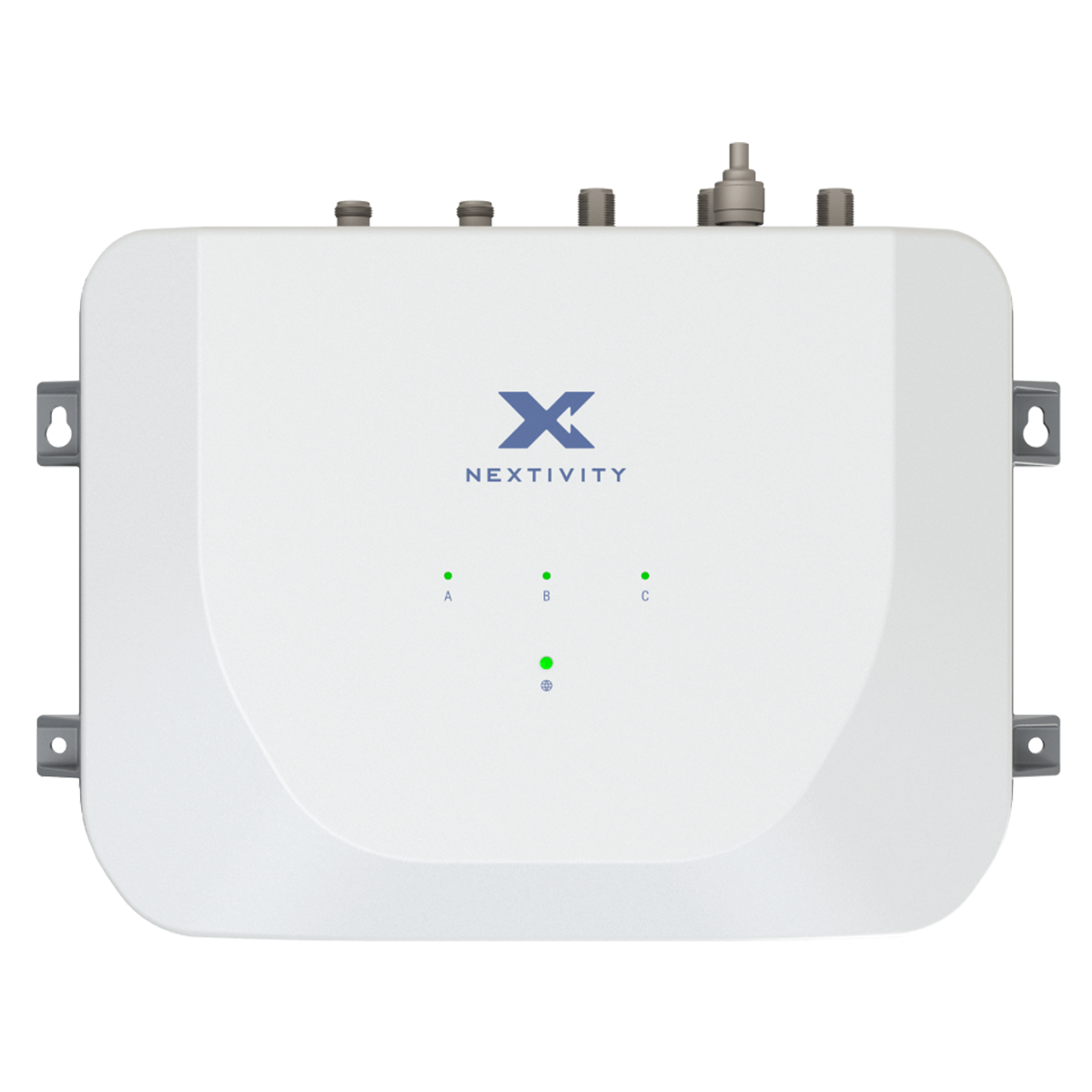
Nextivity Cel-Fi GO G43
Active DAS
In contrast to Passive DAS, Active DAS uses active components to distribute cell signals inside buildings. Depending on building needs, Active DAS setups vary.
Active DAS receives cellular signals from a Base Transceiver Station (BTS) or small cell.
- BTS: Connects directly to the cellular network, which allows for stronger signal transmission and greater capacity. Carrier approval is needed per each carrier's signal you’d like to enhance in your building. It’s typically used in places that accommodate thousands of people, like airports, stadiums, hospitals, universities, and the like.
- Small Cell: Requires a broadband internet backhaul to create a cellular signal. Carrier approval is not needed to obtain these units. They are carrier-specific and have limited capacity.
The signal is sent to a Master Unit, which converts the analog signals into digital signals. Rather than using coax cable, Active DAS uses fiber optic or ethernet cables to transmit the digital signals to Remote Units (RUs). Using digital cable allows for longer cable runs, increasing the scalability.
Depending on the system, RUs are also sometimes called nodes or active antennas. The RUs convert the digital signals back to analog for broadcasting via connected antennas.
Active DAS offers the widest coverage and strongest reception.
Due to the equipment needed, Active DAS is more expensive than Passive and Hybrid DAS. Deployment is much more complicated and can take months to a year.
| Pros: | Cons: |
|
|
Zinwave offers the best solution available for Active DAS. They’ve manufactured a five-component, ultra-wideband, fiber-based system that can be paired with BTSs or small cells. For more information, visit our blog introducing Zinwave DAS solutions.
Get in Touch with an Active DAS Expert for a Free ConsultationHybrid DAS
A Hybrid DAS uses active and passive components to cover a building with reliable cellular signals from one or multiple cellular carriers.
The signal source for a Hybrid DAS is typically analog off-air cell signals captured by a donor antenna. Small cells and BTSs can also be used.
Received analog cell signal is boosted by an amplifier and converted to digital signals by the Master unit. RUs convert the signal back to analog for broadcasting via connected indoor antennas.
A mixture of coaxial and digital cables is used with this setup. This helps transmit a much stronger signal, even if received off-air, across longer distances than a Passive DAS, allowing for greater coverage.
So, if your starting signal is on the weaker side, a Hybrid DAS can help provide you with the best results possible without spending so much money.
| Pros: | Cons: |
|
|
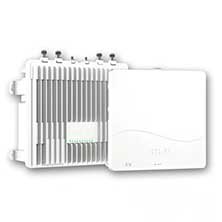
Nextivity QUATRA 4000c
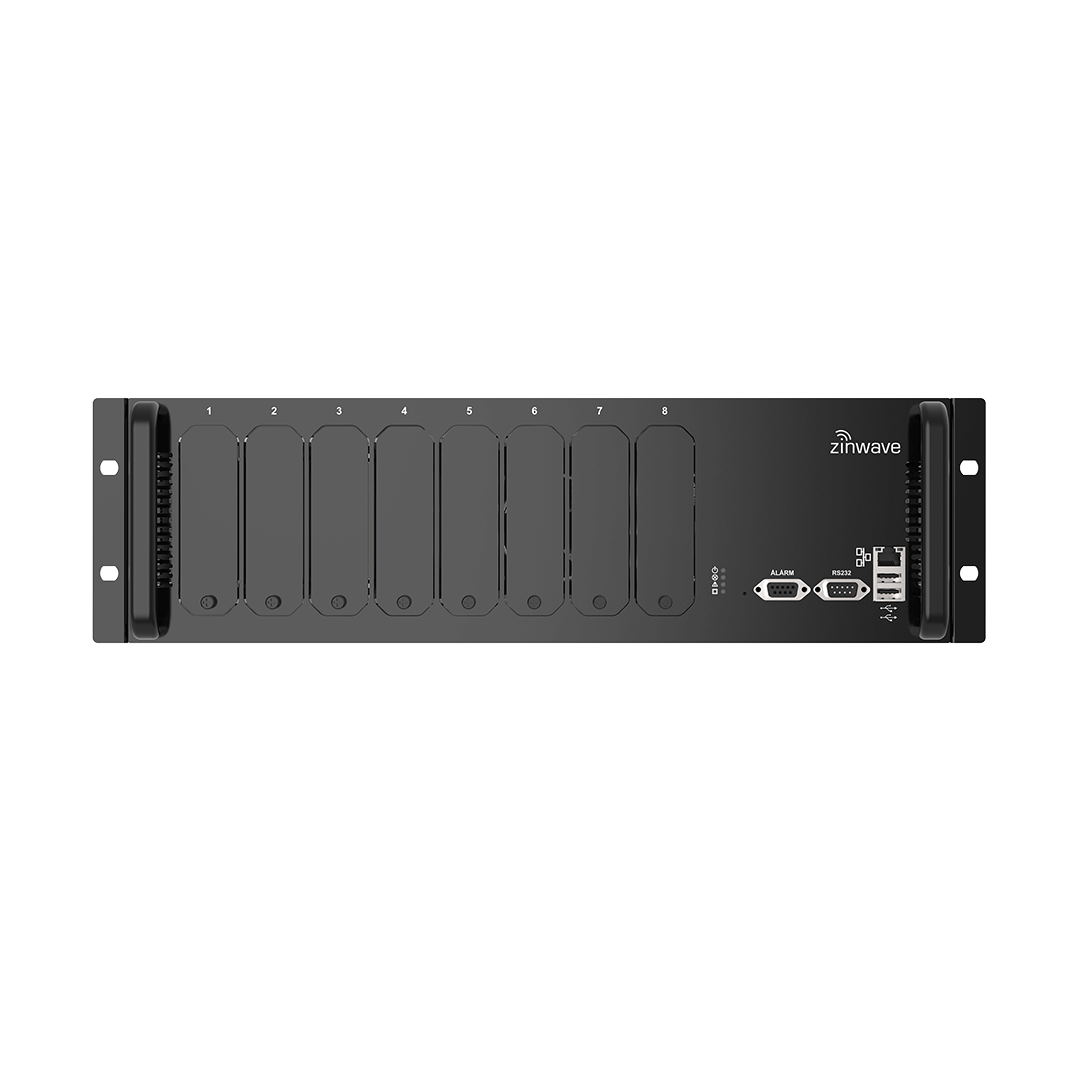
Zinwave + WilsonPro 4300
What's the Difference Between Passive, Active, and Hybrid DAS?
The main difference between the three are:
| Passive DAS | Hybrid DAS | Active DAS | |
| Best For | Buildings up to 100,000 Sq Ft, or 500,000 Sq Ft with Multiple Units | Buildings Between 100,000 Sq Ft and 500,000 Sq Ft | Buildings Over 500,000 Sq Ft |
| Components | All Passive | Passive and Active | All Active |
| Cost | Most Affordable | Mid-Range | Most Expensive |
| Installation Ease | Easiest | Slightly More Complicated | Most Complex |
| Deployment Time | Few Days to a Week | Few Weeks to a Few Months without BTS. Will take longer with BTS. | 6 Months to a Year |
| Cable Runs | Not Ideal for Long Cable Runs | Allows Long Cable Runs | Allows Long Cable Runs |
| Cable Type Used | Coax Cable | Digital Cable (Fiber or Ethernet) | Combination of Coax and Digital Cable |
| Carrier Permission | Not Required | Not Required Unless Wanting BTS | May be Required |
| Performance | Good | Better | Best |
Ready to Talk DAS? Contact the Experts at Signal Boosters Today!
Signal Boosters can help supercharge your building with reliable cellular reception anywhere you need it with any Distributed Antenna System. Unsure of whether Passive DAS, Active DAS, or Hybrid DAS is best for your business? Call us 1-800-887-1961 or email us pro@wilsonamplifiers.com today for a free consultation with a signal expert. We can recommend a solution that will best fit your situation and budget.
Interested in Learning More? Check Out Our Cellular Info Hub / WiFi Info Hub

